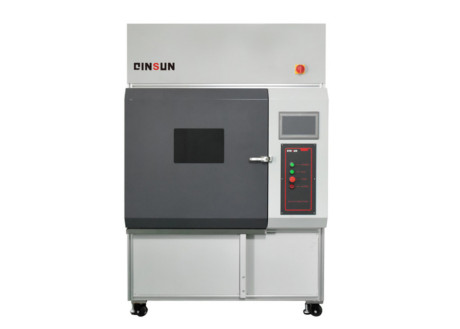Wearable Electronic Devices Burn-in Test Guide

QINSUN developed and produced the Xenon lamp aging test chamber, which is suitable for the aging test of wearable electronic devices. By using the Q-S xenon lamp aging chamber to perform weathering aging tests on wearable electronic devices, users can understand which correct materials should be used for each component of wearable electronic devices, and whether the service life and appearance are as expected.
Wearable devices are made of different materials such as colored thermoplastic or rubber materials, sealants and joints, displays, cameras and protective films, etc. These materials are sensitive to UV radiation, visible light, temperature and humidity. In addition, with the wearer's travel trajectory, wearable electronic devices are sometimes used outdoors and sometimes indoors, but the world's climate varies greatly due to geographic location, temperature, humidity, solar irradiance, etc. difference.

The main factors affecting the aging of wearable electronic equipment products
1. Sunlight
The main stressors for wearable electronics products are sunlight, temperature and water. Solar radiation and product temperature are the two main factors that lead to the degradation of polymer materials, UV light is a key factor in the photodegradation of materials, and the key part of visible light is usually limited to energy-rich violet and blue light in the wavelength range of 380nm-420nm, These two colors completely absorb their respective parts of the visible spectrum, causing wearable electronics to fade.
2. Hot
The temperature of products exposed to the sun is largely affected by the color. The surface of black products can reach 65°C outdoors and even more than 100°C in the car. The surface temperature of white products is relatively low. In addition, wearable electronics are also affected by the energy through which they operate and the body temperature of the wearer, and the reaction rate increases with temperature, which also has an effect on the photodegradation of polymers.
3. Water
Polymer materials for wearable electronics swell when they absorb water, and shrink when the water evaporates, a process that causes mechanical stress. Typically, the effect of water is only significant if the water has penetrated for more than a few hours. When the polymer absorbs water, the glass transition temperature decreases significantly, the oxygen diffusivity increases, photo-oxidation and hydrolysis reactions occur, and the polymer matrix degrades, ultimately resulting in a loss of physical strength.
Wearable electronic device weathering aging test solution-Q-S Xenon lamp aging test chamber
The Q-S xenon lamp aging test chamber can be used for weather resistance testing of wearable electronic devices, providing the same aging factors that products are exposed to in indoor and outdoor environmental conditions. A xenon arc light source is used to simulate full-spectrum sunlight, and it is properly filtered through different filters to obtain a specific spectrum. Simulate humid environments with water spray, condensation, and humidity.
If you want to know more about the quotation of Xenon lamp aging test chamber, please leave us a message!
2022-04-11 04:03

